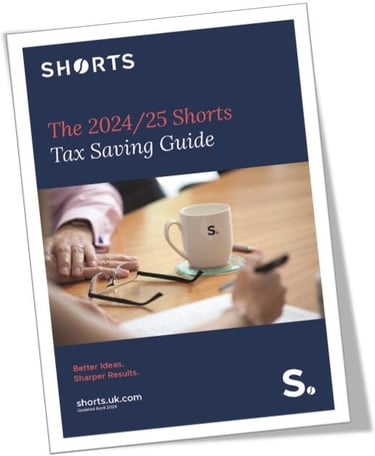
Like most taxes, HMRC imposes penalties and interest to encourage VAT compliance. Over the years, HMRC has reformed the VAT penalties and interest framework, with the most recent changes introduced in 2023.
For VAT returns relating to accounting periods starting on or after 1 January 2023, a new structure has replaced the previous payment penalty system. This system includes a points-based late filing penalty regime and a revised late payment penalty scheme. The way interest is charged has also been updated.
We explore these areas more in-depth and outline the impact these changes can have on your business.
Late submission of VAT returns
Following the changes introduced in 2023, the late submission of VAT returns is now governed by a points-based system. Each late VAT return - including those for £Nil and repayment - will incur one penalty point.
Once you have reached the penalty point threshold, HMRC will issue you a £200 penalty. A further £200 penalty will apply for each additional late submission while you remain at the threshold.
The penalty point threshold
The penalty point threshold is determined based on how often you are required to submit your VAT returns. It represents the maximum number of penalty points you can accumulate before a penalty is applied.
|
Accounting period |
Penalty points threshold |
Period of compliance |
|
Annual VAT returns |
2 |
24 months |
|
Quarterly VAT returns |
4 |
12 months |
|
Monthly VAT returns |
5 |
6 months |
Different rules apply if you have an agreement with HMRC to use non-standard accounting periods. Additionally, if you have arranged with HMRC to change how frequently you submit your VAT returns, your penalty point threshold will be adjusted accordingly.
Resetting the penalty points clock
Accumulated penalty points do not automatically expire once a penalty has been triggered. To reset the points clock, you must meet two conditions:
- Complete a period of good compliance, which varies depending on your VAT return frequency (see the table above), and
- Submit all outstanding VAT returns due within the previous 24 months.
If the points threshold is not reached, each point will automatically expire after 24 months.
Penalty points threshold example
If you submit quarterly VAT returns (four times within a 12-month period) and have filed your returns late on four occasions, you will receive a £200 penalty upon the fourth late submission. This is the point at which you reach the penalty point threshold.
You will then incur a further £200 penalty for each additional late submission while you remain at the threshold. However, you can reset your penalty points if you submit all VAT returns on time for a continuous 12-month period, and file any outstanding returns due in the previous 24 months.
Taking over a business
Where a VAT-registered business is acquired as a ‘going concern’, any penalty points accumulated by the previous owner will not transfer to your VAT registration number. This applies even if the VAT registration number itself is transferred to you from the previous owner.
Exempt VAT returns
The late submission penalty rules do not apply to the:
- First VAT return if you’re newly VAT registered
- Final VAT return after you cancel your VAT registration
- One-off returns that cover a period other than a month, quarter or year
Late VAT payments
You’ll get a first late payment penalty if your payment is 16 or more days overdue. When your payment is 31 or more days overdue, your first late payment penalty increases, and you get a second late payment penalty.
|
Number of days overdue |
Penalty details |
|
Up to 15 days overdue |
There is no penalty if payment of VAT owed to HMRC is made in full or a payment plan is agreed on or between days 1 and 15. |
|
Between 16-30 days overdue |
A first penalty is calculated at 3% of the VAT owed at day 15 if paid in full or a payment plan agreed on or between days 16 and 30. |
| 31+ days overdue |
A first penalty is calculated at 3% on the VAT owed at day 15, plus 3% on the VAT owed at day 30. A second late payment penalty is also calculated at a daily rate of 10% per year on the outstanding balance. This is charged every day, from day 31 until:
|
Late payment interest
Late payment interest applies when you fail to pay your VAT on time. It is charged from the day the payment becomes overdue until the date it is paid in full. The interest rate is calculated at the Bank of England base rate plus 4%.
In contrast, HMRC will pay repayment interest on VAT owed to you — for example, following the submission of a repayment return. This is calculated at the Bank of England base rate minus 1%, with a minimum rate of 0.5%, even if the calculation results in a lower amount. However, repayment interest is not paid on amounts returned due to payment errors.
Unable to pay? Here's what to do
The best way to avoid a penalty is to ensure payments are made within 15 days of the due date. However, HMRC can offset payments against debts in earlier periods leaving businesses with unexpected penalties.
To prevent this, Shorts can offer advice on and assistance with putting a payment plan in place. This is known as a time-to-pay agreement and can be negotiated for either past or current debts. Get in touch with our dedicated VAT Advisory team today for advice on outstanding VAT returns or payments.

Paschal Okonkwo
I work as a tax advisor at Shorts, helping companies and individuals stay tax compliant in the UK.
View my articlesTags: VAT
